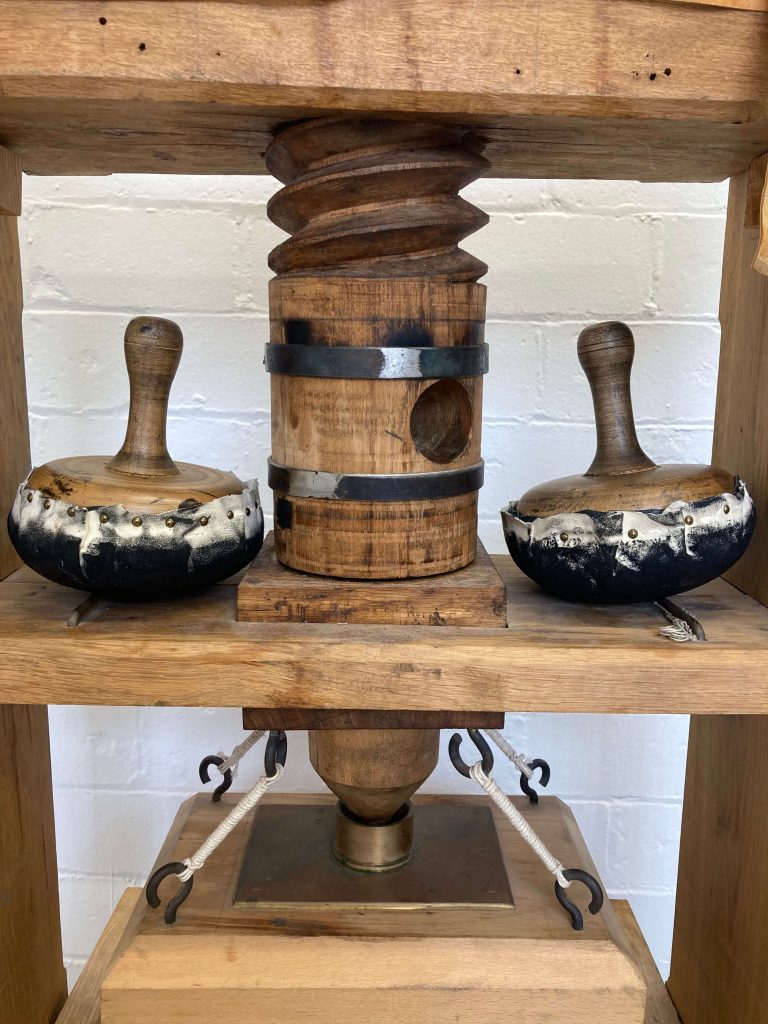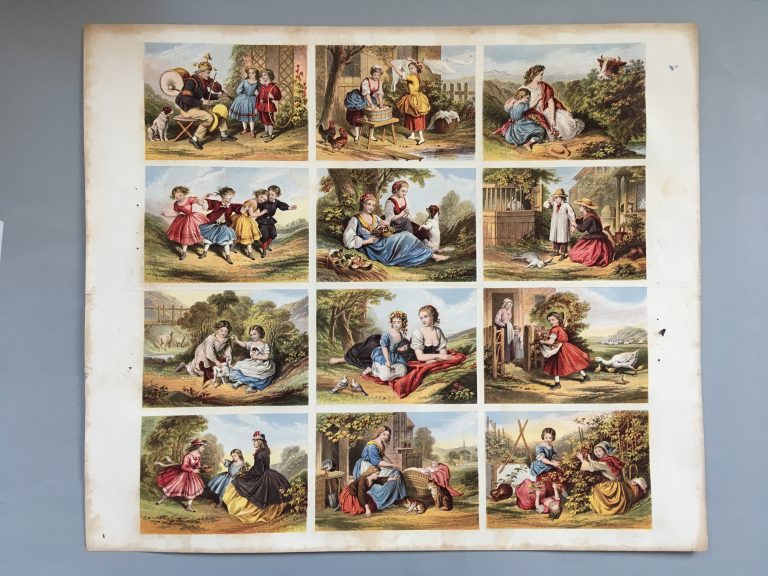Review of 2025: Lettering, Printing and Graphic Design Collections
-
Author
- sfwalker
-
Published Date
- July 14, 2025

New developments
In November 2024 we (and CBCP) hosted a launch of our new Historic Presses Research and Teaching Workshop. The workshop comprises three research-led reconstructions: a one-pull press; a common press and a lithographic pole press each made by Alan May. These are complemented by examples of the major hand presses made and used initially in the nineteenth century, by a Harry Rochat etching press and by a more conventional press for printing from lithographic stones. The workshop includes a collection of C19 wooden type and metal type for handsetting. The Workshop has been included in the Virtual Museum of Printing that aims to bring together the printing-historical resources of the British Isles in one site.
In July 2025 we were awarded ACE museum-accredited status and will now we working to an agreed 3-year Forward Plan to enhance and showcase the LPGDC.
The New Baxter Society awarded us Honorary Membership in recognition of our continued engagement that draws on our outstanding collection of Baxter plates and prints and that draws on our expertise of the process of printing that Baxter used.
Engagement
The Friends of the University returned for an afternoon to view collections of entertainment ephemera from the Centre for Ephemera Studies. We welcomed the Berks OxonCamSoc for an afternoon on a similar theme. We introduced the LPGDC to the design team at Tate, U3A and to London Road UMASCS colleagues. We supported a University Library training hour with a printing demonstration in the new workshop, led by Geoff Wyeth. A group from West Dean College spent a day that included a session in the Historic Presses works shop and opportunity to study prints, ephemera and posters from the collection.
In February 2025, we supported London’s oldest Church, St Bartholomew the Great, with its 300th anniversary celebration of Benjamin Franklin’s first visit to London. The type of press Franklin would have worked on is called a “Common Press” and we were able to provide St Bartholomew’s with our research-led reconstruction of a Common Press. We worked with colleagues from the letterpress workshop in the Old Bodleian Library, Oxford to support visitors to the Church in learning about the printing press and Franklin through demonstrations by expert printers.
We welcomed work-experience student, James Russell, who assisted Emma Minns with sorting and listing sports-related printed ephemera, and synchronological charts. The LPGDC volunteers continue to support collections care and access, in particular those in the Centre for Ephemera Studies: one significant development is a spreadsheet listing cataloguing requirements and material characteristics of over 3000 American trade cards; and listing of over 100 art exhibition private view cards from the 1950s and 1960s.
Research
In 2024-25 the LPGDC was accessed in person and digitally by a wide range of research uses to study aspects of Isotype, typeface design, poster design and printing processes.
We are supplying digital surrogates of items for a major exhibition in Vienna in November 2025, and Christopher Burke, Eric Kindel and Sue Walker have contributed chapters to the exhibition catalogue; Sue Walker is working with an Italian publisher on co-editions of Marie Neurath’s books for children and with local primary school teachers on lesson plans using material from the books about plants.
Xunchang Cheng‘s CBCP Fellowship to work with the LPGDC Chinese metal types underpinned a successful BA Fellowship application starting in October 2025. We hosted two 24/25 CBCP Fellowships: Helena de Barros undertook research using chromolithographed prints from the Michael Twyman Collection; Jennifer Taylor used the workshop to explore printing techniques used in book illustration in the nineteenth century.
We continue to recruit PhD students working with material from the LPGDC, and also drawing on our collections-based research methods to work with collections elsewhere in the world: four students joined 24/25, and we are expecting three students whose proposals include collections-based research in 25/26. Our MA Res programme continues to attract students, with firmly-embedded collections-based writing as a distinctive feature.
Gerry Leonidas has introduced to Tsinghua University our collections-informed approach to research as part of a potential PGR partnership with Tsinghua. A “PGR summit” event, over two half day sessions (14-15 May) [TypoDiversity format] included short presentations and papers by 6 UoR PhDs, and 6 TU PhDs/MRes students. News link in Chinese: https://www.ad.tsinghua.edu.cn/info/1061/31904.htm (English version in preparation)
Following on from the LPGDC sessions at the 2024 SHARP conference, Gerry Leonidas was invited to give a lecture and workshop on working with archives at CHAM (Centre for the Humanities), Lisbon, 16-17 October. He talked at UMPRUM Academy (Prague, 18 June) on research in typeface design, focusing on interpreting archival material
Education
The LPGDC are now used in most undergraduate modules in Typography & Graphic Communication. We continue to work with colleagues across Heritage and Creativity to raise awareness of the material we hold and how we use it: a class on material from Paris ’68 is now available to all students in Modern Languages. Gerry Leonidas convenes a collections-based MA module that draws on LPGDC and other University Collections. In 2025/26 it is now open to all students, by arrangement.
Emma Minns’s collections induction sessions for new PGT and UG students continue to be very well-received. In these sessions Emma shows students examples of the kinds of material they will see in their classes. Emma runs dissertation workshops to introduce collections-based topics that might interest them as well as examples of publications and dissertations that feature LPGDC material.
Sue Walker, Director of the Lettering, Printing and Graphic Design Collections
Emma Minns, Assistant Curator






